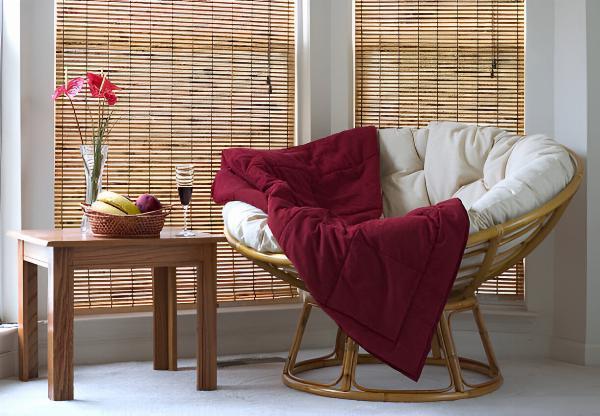Honeycomb Shades: A Comprehensive Guide to Energy-Efficient Window Treatments

Strong 8k brings an ultra-HD IPTV experience to your living room and your pocket.
Introduction
When it comes to choosing window treatments, the options can be overwhelming. From traditional curtains to modern blinds, the choices are endless. However, one type of window treatment that stands out for its unique design and energy efficiency is the honeycomb shade. Also known as cellular shades, honeycomb shades have gained popularity for their ability to provide insulation, light control, and aesthetic appeal. This article will explore the features, benefits, types, and installation tips for honeycomb shades, making it easier for you to decide if they are the right choice for your home.
What Are Honeycomb Shades?
Honeycomb shades are a type of window treatment characterized by their unique cellular structure. They are made from a continuous piece of fabric that is pleated to form a series of cells, resembling a honeycomb. This design is not just for aesthetics; the cells trap air, creating an insulating layer between the window and the room. This insulation helps regulate indoor temperatures, keeping the home cooler in the summer and warmer in the winter.
The shades are available in various cell sizes, colors, and fabrics, allowing homeowners to customize their window treatments to match their interior decor and functional needs.
Benefits of Honeycomb Shades
Honeycomb shades offer a range of benefits that make them a popular choice among homeowners. Here are some of the key advantages:
1. Energy Efficiency
The primary benefit of honeycomb shades is their energy efficiency. The cellular design traps air, which acts as an insulating barrier. This reduces heat loss in the winter and heat gain in the summer, leading to lower energy bills. According to the U.S. Department of Energy, properly installed honeycomb shades can reduce heat loss through windows by up to 40%.
2. Light Control
Honeycomb shades provide excellent light control. Depending on the fabric type and color, you can choose shades that allow diffused light to filter through or opt for blackout shades that completely block out light. This makes honeycomb shades versatile, suitable for both living spaces and bedrooms.
3. Noise Reduction
The cellular structure of honeycomb shades also provides sound insulation. The air pockets within the cells help absorb sound, making your home quieter and more peaceful. This is particularly beneficial for homes located in noisy urban areas or near busy streets.
4. Privacy
Honeycomb shades offer a high level of privacy. The tightly woven fabric and cellular design prevent outsiders from seeing into your home, even when the shades are in the down position. This is especially useful for ground-level windows and bathrooms.
5. Aesthetic Appeal
Available in various colors, textures, and cell sizes, honeycomb shades can complement any interior design style. Whether you prefer a minimalist look or something more ornate, there’s a honeycomb shade that will suit your taste.
6. Durability
Honeycomb shades are made from high-quality materials that are resistant to wear and tear. The fabric is often treated to resist fading and stains, ensuring that your shades look new for years to come.
Types of Honeycomb Shades
Honeycomb shades come in several types, each designed to meet specific needs. Understanding the differences between these types will help you choose the right one for your home.
1. Single-Cell Honeycomb Shades
Single-cell honeycomb shades feature one layer of cells. They are the most basic and affordable type of honeycomb shade. While they provide good insulation, they are best suited for areas where temperature control is not a primary concern, such as living rooms and dining areas.
2. Double-Cell Honeycomb Shades
Double-cell honeycomb shades have two layers of cells, providing better insulation than single-cell shades. They are ideal for rooms where temperature control is crucial, such as bedrooms and nurseries. The extra layer of cells also enhances noise reduction.
3. Triple-Cell Honeycomb Shades
Triple-cell honeycomb shades offer the highest level of insulation and soundproofing. They are the most expensive option but are worth the investment for homes in extreme climates or noisy environments.
4. Light-Filtering Honeycomb Shades
Light-filtering honeycomb shades are designed to allow natural light to filter into the room while maintaining privacy. They are perfect for living rooms, kitchens, and offices where natural light is desired.
5. Blackout Honeycomb Shades
Blackout honeycomb shades are made from a thicker, opaque fabric that completely blocks out light. They are ideal for bedrooms, media rooms, or any space where you want complete darkness.
6. Cordless Honeycomb Shades
Cordless honeycomb shades are a child-safe option that eliminates the need for dangling cords. They operate with a simple push or pull mechanism, making them easy to use and safer for homes with children or pets.
7. Top-Down/Bottom-Up Honeycomb Shades
These versatile shades allow you to lower the shade from the top or raise it from the bottom. This feature provides more control over privacy and light, making them ideal for bathrooms and bedrooms.
How to Choose the Right Honeycomb Shades
Choosing the right honeycomb shades involves considering several factors, including the room’s function, your aesthetic preferences, and your budget.
1. Room Function
Consider the primary function of the room where the shades will be installed. For bedrooms, blackout honeycomb shades are ideal to ensure a good night’s sleep. In living rooms and kitchens, light-filtering shades may be more suitable to allow natural light while maintaining privacy.
2. Insulation Needs
If you live in an area with extreme temperatures, double-cell or triple-cell honeycomb shades are recommended for their superior insulation properties. In milder climates, single-cell shades may be sufficient.
3. Aesthetic Preferences
Honeycomb shades come in various colors and fabrics, so you can choose a style that complements your home’s decor. For a modern look, opt for shades in neutral tones like white, gray, or beige. If you prefer a more vibrant look, consider shades in bold colors like red, blue, or green.
4. Budget
Your budget will also play a role in your decision. Single-cell shades are the most affordable option, while double-cell and triple-cell shades are more expensive due to their enhanced insulation properties. Cordless and top-down/bottom-up shades may also come at a premium.
Installation Tips for Honeycomb Shades
Installing honeycomb shades is a relatively simple process that can be done as a DIY project. However, for large or complicated windows, it may be best to hire a professional.
1. Measure Your Windows
Accurate measurements are crucial for a proper fit. Measure the width and height of your window in three places (top, middle, and bottom) and use the smallest measurement. Decide whether you want an inside mount (within the window frame) or an outside mount (on the wall or window trim) before measuring.
2. Choose the Mount Type
Inside mounts provide a clean, streamlined look, while outside mounts can make the window appear larger and are better at blocking light. Your choice will depend on your aesthetic preferences and the window’s structure.
3. Install the Brackets
Once you have your measurements, install the mounting brackets according to the manufacturer’s instructions. For inside mounts, the brackets should be placed inside the window frame. For outside mounts, the brackets should be placed on the wall or window trim.
4. Attach the Headrail
After the brackets are in place, attach the headrail of the honeycomb shade to the brackets. Ensure it clicks into place securely.
5. Test the Shade
Once installed, test the shade to ensure it operates smoothly. If it’s a cordless or top-down/bottom-up shade, make sure it moves up and down without issues.
Maintenance and Care
Honeycomb shades are low-maintenance, but regular care will keep them looking and functioning like new.
1. Dusting
Use a feather duster or a vacuum cleaner with a brush attachment to remove dust from the shades. This should be done regularly to prevent dust buildup.
2. Spot Cleaning
If the shades get stained, spot clean with a mild detergent and a soft cloth. Avoid soaking the fabric, as too much moisture can damage the material.
3. Avoid Harsh Chemicals
Do not use harsh chemicals or abrasive cleaners on honeycomb shades, as they can damage the fabric and affect the shade’s appearance.
Conclusion
Honeycomb shades are an excellent choice for homeowners looking to enhance their home’s energy efficiency, privacy, and aesthetic appeal. With their unique cellular structure, these shades provide superior insulation, making them a practical and stylish solution for any room in the house. Whether you’re looking for light-filtering options for your living room or blackout shades for your bedroom, honeycomb shades offer a versatile range of options to meet your needs. By carefully considering the type, style, and installation method, you can enjoy the benefits of honeycomb shades for years to come.
Note: IndiBlogHub features both user-submitted and editorial content. We do not verify third-party contributions. Read our Disclaimer and Privacy Policyfor details.


